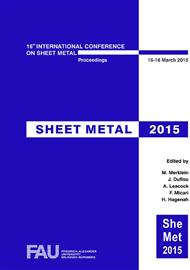p.33
p.41
p.49
p.57
p.65
p.71
p.77
p.83
p.91
Internal Flow-Turning - An Innovative Technology for the Manufacture of Tailored Tubes
Abstract:
In order to optimise the material utilisation and improve the lightweight design of automotive parts tailored hollow profiles are needed, especially as semi-finished parts for hydroforming. Internal Flow-Turning is an innovative incremental forming technology which enables the manufacture of tubes featuring a varying wall thickness and a constant outer diameter. These characteristics facilitate the material feed at hydroforming processes significantly. In addition, the spinning-related forming technology improves the mechanical material properties, shape and dimensional accuracy, and the surface quality of parts produced.
Info:
Periodical:
Pages:
65-70
Citation:
Online since:
March 2015
Authors:
Keywords:
Price:
Сopyright:
© 2015 Trans Tech Publications Ltd. All Rights Reserved
Share:
Citation:


